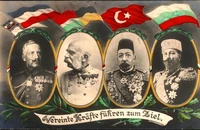| This Central World page is a Proposal.
It has not been ratified and is therefore not yet an official part of the Central World Timeline. You are welcome to correct errors and/or comment at the Talk Page of this article. If you add this label to an article, please do not forget to make mention of it on the main Discussion page for the Timeline. |
| |||||
| Capital (and largest city) |
Hsinking (Changchun) | ||||
| Language official |
Japanese | ||||
| others | Kyōwago (協和語), Mandarin Chinese | ||||
| Religion | Shinto, Buddhism, Taoism | ||||
| Government | Constitutional monarchy | ||||
| Emperor | |||||
| Prime Minister | |||||
| Established | 1932 | ||||
| Currency | Manchukuo yuan | ||||
Manchu State (満州国, Manshūkoku; simplified Chinese: 满洲国; traditional Chinese: 滿洲國) is a state in Manchuria and eastern Inner Mongolia. The region was the historical homeland of the Manchus, who founded the Qing Dynasty of China. In 1931, the region was seized by Japan following the Mukden Incident and in 1932, a puppet government was created, with Pu Yi, the last Qing emperor, installed as the nominal regent and emperor.
History[]
Background[]
After Manchu tribes conquered China they replaced the Ming Dynasty with the Qing. However, the Manchu emperors did not fully integrate their homeland into China. This legal and, to a degree, ethnic division persisted until the Qing dynasty began to fall apart in the 1800s.
As the power of the court in Beijing weakened, many outlying areas either broke free (like Kashgar) or fell under the control of Imperialist powers. In the 1800s, Imperial Russia was most interested in the northern lands of the Qing Empire. In 1858, Russia gained nominal control over a huge tract of land called Outer Manchuria thanks to the Supplementary Treaty of Beijing that ended the Second Opium War. But Russia was not satisfied and, as the Qing Dynasty continued to weaken, they made further efforts to take control of the rest of Manchuria. Inner Manchuria came under strong Russian influence in the 1890s with the building of the Chinese Eastern Railway through Harbin to Vladivostok.
Origins[]
As a direct result of the Russo-Japanese War (1904/05) Japanese influence replaced Russia's in Inner Manchuria. In 1906, Japan laid the South Manchurian Railway to Port Arthur (Japanese: Ryojun). Between World War I and World War II Manchuria became a political and military battleground between Russia, Japan, and China.



